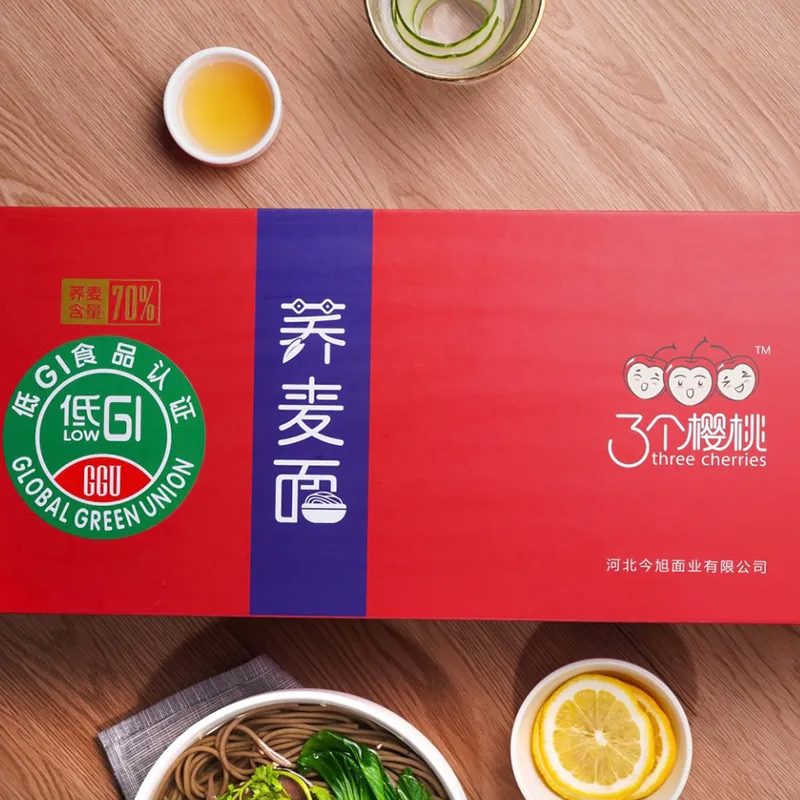how to cook soba noodles
How to Cook Soba Noodles A Step-by-Step Guide
Soba noodles, made from buckwheat flour, are a traditional Japanese staple that has gained popularity worldwide due to their unique texture and nutty flavor. Not only are they delicious, but they are also nutritious, providing a good source of protein and fiber. Cooking soba noodles may seem daunting, but with this step-by-step guide, you'll be able to prepare them perfectly every time.
1. Gather Your Ingredients and Supplies
Before you start cooking, make sure you have all the necessary ingredients and tools. For soba noodles, you'll need
- Soba noodles (dry) - Water - Salt (optional) - A large pot - A colander or strainer - A bowl of ice water (for cooling, optional)
You might also want to have some dipping sauce or dressing on hand, such as soy sauce, sesame oil, or a homemade vinaigrette, to enhance the flavor of your soba dishes.
2. Boil Water
Fill a large pot with plenty of water—aim for about 4 to 6 quarts to ensure the noodles have enough space to move around. Bring the water to a rolling boil over high heat. Adding a pinch of salt can enhance the flavor of the noodles, although it is not strictly necessary.
Once the water is boiling, carefully add the soba noodles. Stir gently with a wooden spoon or chopsticks to prevent the noodles from sticking together. Be cautious, as the steam rising from the pot can be hot.
4. Cook the Noodles
Cook the soba noodles according to the package instructions, which typically recommend 4 to 6 minutes, depending on the brand and thickness of the noodles. Stir occasionally to ensure even cooking. Keep an eye on the time, as overcooked soba can become mushy.
how to cook soba noodles

5. Test for Doneness
To check if the noodles are done, taste a strand. It should be tender yet firm to the bite (al dente). If they aren't quite ready, continue to cook them for an additional minute, checking frequently.
6. Drain and Rinse
Once the noodles are cooked to your liking, remove the pot from the heat. Carefully pour the noodles into a colander to drain the water. To stop the cooking process and remove excess starch (which can cause stickiness), rinse the noodles under cold running water for about 30 seconds. If you plan to serve them cold, you can also plunge the noodles into a bowl of ice water after rinsing.
7. Serve Your Soba Noodles
You can serve soba noodles hot or cold, depending on your preference. For a hot dish, you might combine the noodles with a flavorful broth or stir-fry them with vegetables and protein. For a cold dish, toss the noodles with some sesame oil and soy sauce, along with sliced vegetables, or serve them with a dipping sauce on the side.
8. Enjoy with Toppings
Soba noodles can be customized with a variety of toppings. Common choices include
- Chopped green onions - Toasted sesame seeds - Nori (seaweed) - Tempura (battered and fried vegetables or shrimp) - Sliced cucumbers or radishes
Experiment with different flavors and textures to find your perfect combination.
Conclusion
Cooking soba noodles is a simple and rewarding experience that can elevate your meals with ease. With their delicious taste and versatility, soba noodles can be utilized in various dishes, from soups and salads to stir-fries. Remember to pay attention to the cooking time and rinse them properly for the best results. So next time you’re looking for a quick, nutritious meal, consider including soba noodles in your recipe repertoire. Enjoy your cooking and bon appétit!
-
Unleash Your Inner Chef with Delectable Italian Pasta CreationsNewsAug.01,2025
-
Savor Health and Flavor: Irresistible Soba Noodles for Sale Await!NewsAug.01,2025
-
Nourish Your Body with Premium Organic Ramen - A Culinary Delight AwaitsNewsAug.01,2025
-
Elevate Your Dishes with Our Exquisite Kinds of Egg NoodlesNewsAug.01,2025
-
Dive into Flavorful Convenience with Our Ramen OfferingsNewsAug.01,2025
-
Discover Exquisite Types of Naengmyeon and Chilled Soba NoodlesNewsAug.01,2025
-
Is Whole Wheat Pasta Healthy?NewsMay.30,2025
Browse qua the following product new the we

















































































































